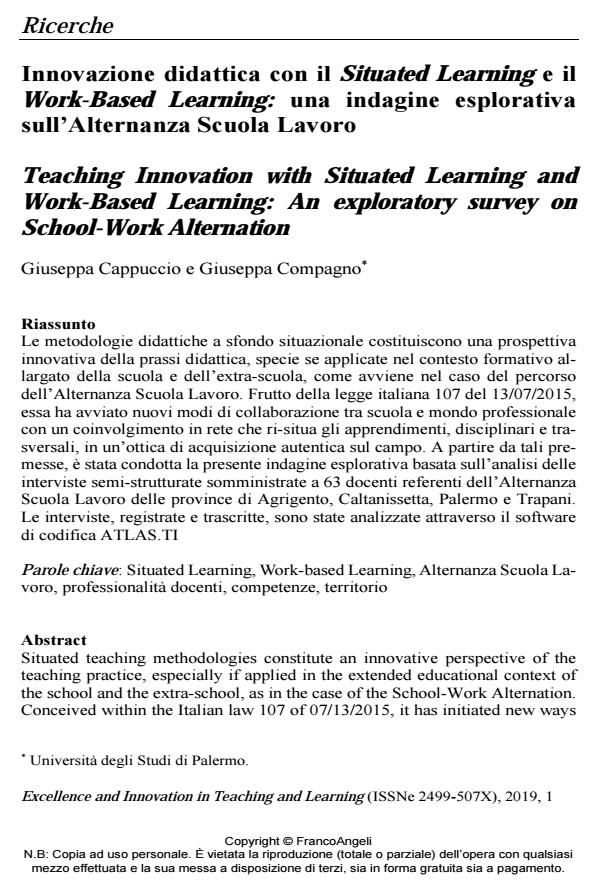Teaching Innovation with Situated Learning and Work-Based Learning: An exploratory survey on School-Work Alternation
Journal title EXCELLENCE AND INNOVATION IN LEARNING AND TEACHING
Author/s Giuseppa Cappuccio, Giuseppa Compagno
Publishing Year 2019 Issue 2019/1
Language Italian Pages 19 P. 42-60 File size 362 KB
DOI 10.3280/EXI2019-001003
DOI is like a bar code for intellectual property: to have more infomation
click here
Below, you can see the article first page
If you want to buy this article in PDF format, you can do it, following the instructions to buy download credits

FrancoAngeli is member of Publishers International Linking Association, Inc (PILA), a not-for-profit association which run the CrossRef service enabling links to and from online scholarly content.
Situated teaching methodologies constitute an innovative perspective of the teaching practice, especially if applied in the extended educational context of the school and the extra-school, as in the case of the School-Work Alternation. Conceived within the Italian law 107 of 07/13/2015, it has initiated new ways of collaboration between the school and the pro-fessional world with a networking involvement which re-situates both disciplinary and transversal learning, in a perspective of authentic acqui-sition on the field. Starting from these premises, the present exploratory survey was based on the analysis of the semi-structured interviews administered to 63 School-Work Alternation referent teachers of the provinces of Agrigento, Caltanissetta, Palermo and Trapani. The interviews, recorded and tran-scribed, were analyzed through the ATLAS.TI coding software.
Keywords: Situated Learning, Work-based Learning, School-Work Alter-nation, teachers’ professional skills, competences, territory
Giuseppa Cappuccio, Giuseppa Compagno, Innovazione didattica con il Situated Learning e il Work-Based Learning: una indagine esplorativa sull’Alternanza Scuola Lavoro in "EXCELLENCE AND INNOVATION IN LEARNING AND TEACHING" 1/2019, pp 42-60, DOI: 10.3280/EXI2019-001003